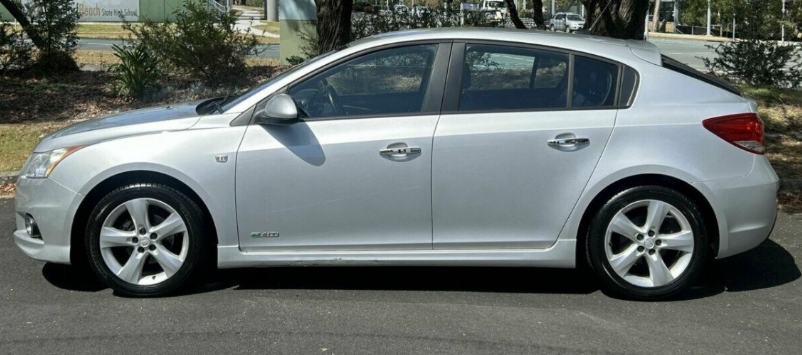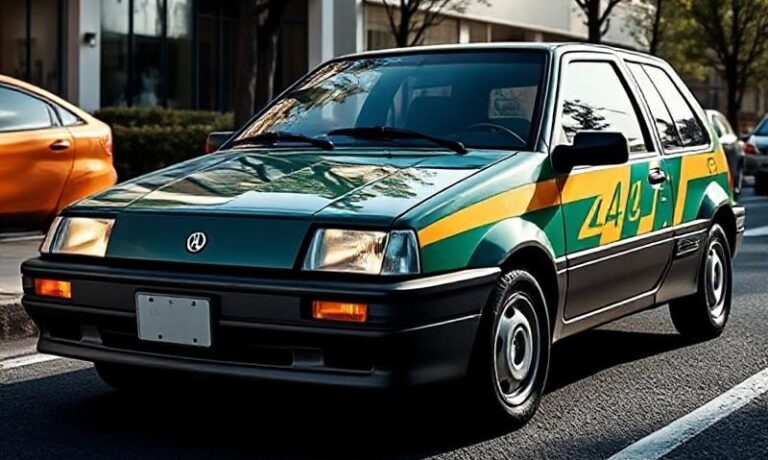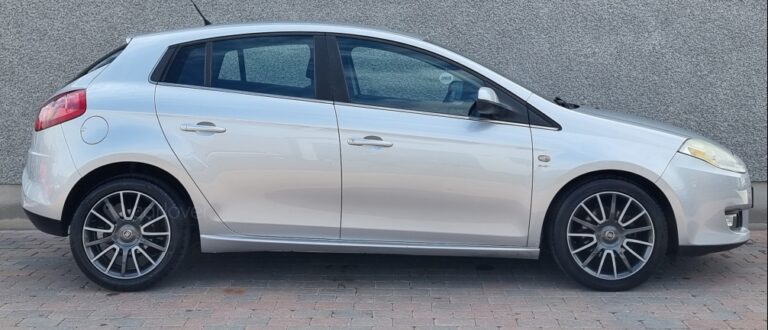The Chameleon’s Journey: Charting the Evolution of the Holden Cruze
The name ‘Holden Cruze’ evokes different memories for different Australians. For some, it conjures images of a quirky, high-riding compact from the early 2000s. For most, it represents Holden’s bold, locally-built contender in the fiercely competitive small car segment. And for others, it’s a final, bittersweet echo of a brand in transition. The story of the Holden Cruze is not one of a single, linear model but a fascinating tale of three distinct vehicles sharing a single nameplate. It’s a journey that mirrors the shifting landscape of the global automotive industry and, more poignantly, the final chapter of Australian car manufacturing.
The Unexpected Beginning: The JG Cruze (2002-2006)
Long before the familiar sedan and hatchback dominated suburban driveways, the Cruze name first appeared on a completely different vehicle. In 2002, Holden introduced the JG Cruze, a compact, SUV-styled crossover that was a world away from its later namesakes. This was not a product of Holden’s own design studios but a classic example of badge engineering, born from a collaboration between General Motors and Suzuki.
Based on the Suzuki Ignis, the JG Cruze was designed to capture a slice of the emerging market for small, practical, and slightly rugged city cars. Its tall, boxy silhouette, prominent wheel arches, and higher ground clearance gave it a distinctive, almost toy-like appearance that stood out from the sea of conventional hatchbacks. It was marketed as a light-duty “all-roader,” a perfect companion for urban adventures with the occasional gravel track thrown in.
Underneath its unique sheet metal was a straightforward and reliable package. The JG Cruze was offered in a single trim level, powered by a single engine: a 1.5-litre DOHC four-cylinder petrol engine producing a modest 74kW and 140Nm of torque. Uniquely for its class at the time, it came standard with an on-demand all-wheel-drive (AWD) system, a feature that Holden heavily promoted to give it a unique selling proposition over front-wheel-drive competitors. Buyers could choose between a five-speed manual or a four-speed automatic transmission.
Standard features were basic but functional, including air conditioning, a CD player, power windows, and dual airbags. While it was never a volume seller, the first-generation Cruze carved out a niche for itself as a dependable and economical oddity. It was a footnote in Holden’s history, but it planted the seed of the Cruze name in the Australian public’s consciousness, paving the way for the vastly different car that would follow.
.
THIS is GOOD stuff if your car is in need:

.
The Global Game-Changer: The JG/JH Series I (2009-2011)
In 2009, the Cruze name was reborn. The quirky Japanese crossover was gone, replaced by a sophisticated and globally significant C-segment sedan. This new Cruze, internally designated JG, was Holden’s answer to the dominant Toyota Corolla and Mazda3. It was a product of GM’s new global Delta II platform, developed primarily by GM Daewoo in South Korea and sold worldwide as the Chevrolet Cruze.
Its arrival marked a seismic shift for Holden. The long-serving and much-loved Astra was phased out, and the Cruze was tasked with rebuilding Holden’s reputation in the small car market after the lacklustre performance of the Daewoo-sourced Viva. The new Cruze was a revelation. Its sharp, contemporary styling, impressive build quality, and modern interior were light-years ahead of its predecessor.
Initially launched as a sedan only, the imported JG Cruze was offered in two primary trim levels:
- Cruze CD: The entry-level model, it was surprisingly well-equipped for its time. It came with a choice of a 1.8-litre Ecotec four-cylinder petrol engine (104kW/176Nm) or a powerful 2.0-litre SOHC turbodiesel (110kW/320Nm). Standard features included 16-inch steel wheels, electronic stability control (a significant safety feature), six airbags, cruise control, and automatic headlights.
- Cruze CDX: The premium offering added a host of luxury appointments. It featured 17-inch alloy wheels, front fog lamps, heated front seats with leather upholstery, rear parking sensors, and a leather-wrapped steering wheel and gear shifter. The CDX was available with the same 1.8-litre petrol and 2.0-litre diesel engines as the CD.
The JG Cruze was an immediate success. It earned a 5-star ANCAP safety rating and was praised for its comfortable ride and refined cabin. While the 1.8-litre petrol engine was criticised by some for being lacklustre, the torquey diesel was a standout, offering excellent fuel economy and effortless performance.
Made in Australia: The JH Series II (2011-2014)
The most significant chapter in the Cruze story began in March 2011. After years of planning and a substantial co-investment from the federal government, production of the Cruze shifted from South Korea to Holden’s manufacturing plant in Elizabeth, South Australia. This was a moment of immense national pride and a beacon of hope for the local automotive industry. The Australian-built model was designated the JH series.
The move to local production brought with it the highly anticipated five-door hatchback body style, with a rear end designed and engineered by Holden’s own design team in Port Melbourne. The hatch gave the Cruze a sportier appeal and broadened its market reach considerably.
More importantly, the Series II update addressed the key criticism of the original model: its powertrain. Holden introduced a new, sophisticated 1.4-litre iTi (intelligent Turbo induction) petrol engine. This downsized, turbocharged unit produced the same power as the 1.8-litre (103kW) but delivered significantly more torque (200Nm) across a much wider rev range, transforming the car’s driveability. It was also paired exclusively with a more advanced six-speed automatic transmission.
Holden also introduced a locally-tuned suspension setup featuring a Watts link rear axle on turbo-petrol models, providing superior handling and road-holding specifically tailored for Australian conditions.
The trim level structure was expanded to reflect the new engine options and sportier focus:
- Cruze CD: Remained the base model, available in sedan and hatch with the carry-over 1.8-litre petrol or an upgraded 120kW 2.0-litre turbodiesel.
- Cruze CDX: The luxury-oriented model, also available with the 1.8-litre petrol or 2.0-litre diesel engines in sedan form.
- Cruze SRi: A new, sporty variant. It came standard with the 1.4-litre turbo engine, sports suspension, 17-inch alloys, a subtle body kit, and chrome exterior accents.
- Cruze SRi-V: The flagship performance model. It built on the SRi specification with added features like 18-inch alloy wheels, leather upholstery, satellite navigation, a reversing camera, and keyless entry with push-button start.
Peak Cruze: The Mid-Cycle Refresh and Sportwagon (2014-2016)
In 2013, the Australian-built Cruze received another major update, solidifying its position as one of the best-value small cars on the market. The trim names were revised (CD became Equipe) and the powertrain lineup was significantly enhanced. The highlight was the introduction of a new 1.6-litre turbocharged petrol engine for the SRi and SRi-V models. This engine, borrowed from the Opel Astra, delivered a potent 132kW and 230Nm, finally giving the Cruze the warm-hatch performance to match its sporty looks.
The 1.4-litre turbo was cascaded down to become the standard engine for the mid-spec CDX, while the aging 1.8-litre was relegated to the base Equipe model only. Holden’s MyLink infotainment system with a 7-inch touchscreen was also rolled out across the range, dramatically improving the car’s technological appeal.
In 2013, the Cruze family grew once more with the addition of the Sportwagon. Unlike the sedan and hatch, the wagon was fully imported from GM’s plant in South Korea. It offered a huge increase in practicality with its expansive cargo area and was available in CD and CDX trims, powered by either the 1.8-litre petrol or 2.0-litre diesel engine.
Throughout this period, Holden released several special editions to maintain sales momentum, including the popular Z-Series and Black Edition models, which bundled desirable features like larger alloys, satellite navigation, and unique cosmetic enhancements into high-value packages.
The Final Chapter and Fade to Black (2016-2018)
The announcement of Holden’s factory closure in 2017 spelled the end for the Australian-built Cruze. In October 2016, the last Cruze sedan rolled off the Elizabeth production line, a mournful milestone for local manufacturing.
Holden, transitioning to a full-line importer, attempted to keep the nameplate alive. In 2017, an all-new generation Cruze sedan was launched in Australia, imported from South Korea. This car was based on the new global Delta platform that also underpinned the new Holden Astra. However, in a confusing marketing move, Holden decided to sell the German-sourced Astra hatch and wagon alongside the Korean-sourced Cruze sedan.
This new Cruze was a competent car, powered by a modern 1.4-litre turbo engine across all trims (LS, LT, and Premier). It was lighter, more efficient, and packed with technology. But the magic was gone. Stripped of its Australian identity and forced to compete with its own Astra sibling on the showroom floor, the imported Cruze struggled to find its footing.
Sales were slow, and as Holden’s overall market share continued to decline, the Cruze became a casualty of a shrinking lineup. It was quietly discontinued from the Australian market in 2018, two years before the Holden brand itself was retired by General Motors.
The evolution of the Holden Cruze is a rich and complex story. It began as a curious Japanese-Australian crossover, transformed into a globally-sourced sales champion, and peaked as a proud, Australian-made hero. Its final form, an anonymous import, served as a sad prelude to the end of an era. More than just a model name, the Cruze was a barometer of Holden’s fortunes—a symbol of its global ambitions, its local engineering prowess, and ultimately, its poignant decline.







